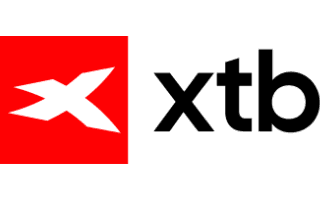
- Choose from 600+ ETFs
- Investing tools and resources
- Fractional investing
Exchange-traded funds (ETFs) are a popular and beginner-friendly way to start investing in the UK. Traded on a stock exchange, ETFs are bundles of different investments — including shares, bonds, and other assets — often spread across various sectors and regions. This built-in diversification makes them ideal for new investors who want broad market exposure without the hassle of picking and managing individual assets.
If you’re not confident building a portfolio from scratch, ETFs can do the heavy lifting for you. In this guide, we’ll cover what an ETF is, the main types available, how they work, and what to look out for, so you can decide if they’re the right building blocks for your investing journey.



An exchange traded fund (ETF) can be thought of as a basket filled up with lots of investments. You can invest in an ETF with just one investment, whilst getting exposure to everything in the fund in one go. This simplicity can be great for beginners, those investing small amounts or those that don’t want to create and manage their own investment portfolio.
ETFs are often themed, with a connecting factor for the stocks or investments included. For example, you could have a “US stocks ETF”, a basket filled with the stocks of individual US companies like Apple, Amazon and Tesla.
Equally, you could have a “European sustainable energy ETF”, filled up with European companies which focus on renewable energy.
The most popular ETFs tend to track major stock market indices (like the S&P 500 or the FTSE 100).

Exchange traded funds (ETFs) are quite easy to wrap your head around. An ETF investment is a single security containing a bundle of stocks and shares. So, when you invest in an ETF, you get to own a piece of each and every asset in the fund.
The 2 main ways for ETFs to be structured are:
Most ETFs work the same way as index funds, but ETFs are called “exchange traded” because you can buy them on multiple stock exchanges (unlike index funds). This makes trading ETFs accessible for most investors because you can buy the same ETF on different platforms, just like stocks.
There are loads of ETFs out there, and the market is growing in size and sophistication all the time. Some examples include:
ETFs can be in more than one of the categories above. For example, you could get an actively managed sector ETF that considers ESG factors. We’ve explained each category in more detail below.
The most popular and well-established ETFs track the major stock market indices around the globe.
The world’s largest ETF is the SPDR S&P 500 ETF (SPY), which currently holds around $320 billion in assets (about £267 billion).
Most of these indices will be market-cap weighted, which means they have the highest weighting in the largest stocks in any index. Different sectors dominate different stock markets. The UK’s FTSE 100, for example, is skewed to the large oil and gas companies, multinational banks and pharmaceutical companies, while the S&P 500 is focused on technology, including behemoths such as Apple, Microsoft and Amazon.
For investors, these ETFs provide diversified exposure to key stock markets. However, it is worth checking the type of exposure. The FTSE 100 won’t suit fans of high-growth technology stocks, for example. These investors may prefer the S&P 500.
Sector ETFs are exactly what they sound like: they’re groups of investments linked to a specific sector. There is a vast range of sector ETFs to choose between, including technology, agriculture, energy and artificial intelligence. These allow investors to take advantage of exciting new areas of the market, which may not be included in their “core” investment strategy.
These have become increasingly popular in recent years. Instead of weighting by the size of the company, these ETFs will be weighted by different styles or factors. That might be high revenues, or share price momentum, or dividend yield. There will also be ETFs that track “value” or “growth” indices.
Actively managed ETFs are a relatively recent innovation where portfolio managers are more involved in picking companies for the portfolio and changing the holdings within the fund. These won’t be as cheap as conventional ETFs but aim to be cheaper than a fully active fund.
These will track the price of individual commodities or a basket of commodities. This might be gold, oil, wheat or, more broadly, precious metals or agricultural commodities. These will either be physically backed – where the ETF will hold the commodity – or may be based on futures pricing.
Learn more about commodity ETFs
Currency ETFs will track the relative value of a currency or a basket of currencies. These may be “Bullish Dollar” or “Ultrashort Yen”. It is an alternative to placing individual currency trades and can be a useful way to hedge against major political events, such as a US election or Brexit.
Bond ETFs will be based on the major bond indices and are likely to focus on specific areas of the bond markets, such as global government bonds, investment-grade corporate bonds or high-yield (“junk”) bonds. One problem with size-weighted bond indices is that they tend to give the highest weighting to the most indebted companies. However, ETF providers have increasingly explored alternatively-weighted indices in response to this problem.
ETFs that bring in environmental, social and governance (ESG) criteria have been among the most popular areas recently. These ETFs will either exclude individual sectors, such as tobacco, armaments or pornography, or they will tilt the portfolio towards companies with the highest ESG scores based on the assessment of ratings providers such as Morningstar. There will also be ETFs dedicated to specific areas, including climate change or the energy transition.
Many of the major ETFs will look very similar. An S&P 500 ETF, for example, is likely to charge 0.1% or lower as its annual management fee. As such, there doesn’t tend to be a lot of differentiation in price. With more complex ETFs, including commodity ETFs, there can be more price variation, so it is worth seeing how the ETFs compare.
Investors may be reassured by the brand of the ETF. There are the major global providers – iShares is the largest, followed by Vanguard, State Street, Invesco and Charles Schwab – who sit alongside more specialist providers, such as ETF Securities, Amundi and Wisdom Tree.
Investors may also want to check how the ETF replicates the index – whether it is synthetic or physical replication – and also how well they do it. It is important that an ETF provider sticks close to the index or asset that they claim to be tracking.
In general, ETFs fall into 2 main categories based on replication – physical and synthetic.
Physical replication is when the ETF holds the underlying asset. In the case of an S&P 500 ETF, the ETF would hold all the underlying stocks in the index.
Synthetic replication is when the ETF issuer replicates the index by taking out a derivative or swap with an investment bank. The investment bank agrees to provide the return of the index to the investor.
There are pros and cons to each type of ETF – in the US, physical replication is more popular because of some regulatory constraints, while synthetic replication is used more widely in Europe. Issuers of synthetic funds say they tend to track the underlying asset more closely, while critics suggest that synthetic replication introduces more counterparty risk.
Yes! ETFs are often considered one of the best investments for beginners. They’re useful for beginner investors because many ETF investments are cheap, diverse and simple to understand. You can use a broad ETF to invest in an index that tracks the top stocks and shares in a particular country or the whole global market.
You can also use an ETF investment to invest in a whole sector, which can be less risky than picking individual stocks. Because ETFs let you invest more broadly with a single investment, you get some automatic diversity. However, not all ETF investments are good for beginners. Certain ETFs invest in more complex areas. So it’s often best for beginners to use an ETF that tracks a major stock market index – these are usually the cheapest and easiest to grasp.
ETFs offer beginners a simple and cost-effective way to diversify their investment portfolio, providing access to a wide range of assets with ease. There’s plenty of choice and some ETFs will be better than others but you need to take a bit of time to figure out which ETFs best suit the rest of your portfolio and investing strategy.”
There are loads of share dealing accounts that let you invest in ETFs. However, some platforms are cheaper than others. And certain online brokerages give you a wider choice of ETF investments to choose from.
Although you can buy ETFs on most platforms, it’s worth double-checking that your share dealing account lets you buy the particular ETF investment you want and that you’re not charged high fees or commissions.
ETFs trade just like stocks. Here are some of the UK’s leading platforms that let you buy ETFs.
To make comparing even easier we came up with the Finder Score. Costs, features, ease and range of investments across 30+ platforms are all weighted and scaled to produce a score out of 10. The higher the score the better the platform – simple.
Read the full methodologyAll investing should be regarded as longer term. The value of your investments can go up and down, and you may get back less than you invest. Past performance is no guarantee of future results. If you’re not sure which investments are right for you, please seek out a financial adviser. Capital at risk.
How you use ETFs in your portfolio will be highly individual and depend on your risk appetite and financial goals. Some investors use an MSCI World tracker as a way to get started in investing until they build up confidence. They might then add selected exposure to individual regions – the US, UK or even emerging markets.
If picking your own mixture of ETFs isn’t for you, many platforms will offer ready-made portfolios of ETFs based on your investing preferences and risk appetite. Using these or a robo-advisor portfolio of ETFs can be a simpler option for those who don’t want to manage an ETF portfolio.
Then there will be those looking to trade ETFs. ETFs can lend themselves well to regular trading because of their liquidity and variety of options. However, they tend to be less volatile than some other assets so there can be fewer trading opportunities with less frequent or smaller price movements.
Yes, most ETFs charge an OCF (ongoing charge). This will be shown as a percentage amount, and your fee will be based on how much of that ETF you own. Sometimes the fee will be referred to as TER (total expense ratio). It depends on the fund.
On top of this, your brokerage might charge a one-off commission for buying an ETF and perhaps a separate ongoing fee to hold ETFs in your portfolio. Some brokerages are better than others when it comes to buying and holding ETFs. For some ETFs, you may also have to pay an FX (foreign exchange) fee when you invest.
ETFs are a cheap and liquid way to access a range of investment markets. Investors can use them at the heart of their portfolio or to take exposure to niche markets. They are now a huge market, and their popularity is likely to continue.
It stands for exchange traded fund.
Trading ETFs simply means the buying and selling of exchange traded funds (ETFs).
This is an investment portfolio made up of a combination of various ETFs. So, instead of creating a portfolio with individual stocks and shares, an ETF portfolio can be more diversified and easier to manage.
No, unless you hold your ETFs in a stocks and shares ISA or a SIPP (self-invested personal pension), you’ll have to pay dividend or capital gains tax (CGT) on any profit you make.
It depends. Typically, ETFs are less volatile than many other types of investments. However, this isn’t always the case. For example, if you invest in an ETF that tracks a specific area, your ETF will reflect the volatility of that sector or market.
Yes, they can. If you want to use an ETF that compounds automatically, you should pick an accumulation ETF. To do this, choose an ETF with the letters “Acc” at the end of the name. Or check the Key Information Document (KID). Accumulation means any income is rolled back into the fund, compounding automatically.
It depends on the timeframe you’re looking at. Broad market ETFs have been very successful over long periods, for example – tracking the S&P 500 index. However, in recent years, tech stocks have performed so well that an ETF tracking the Nasdaq 100 would have been one of the best performers. It’s important to have a long-term view and pick an ETF investment that suits your goals.
We update our best ETFs page every month, so give it a look to learn more about the best-performing exchange traded funds
A stock is a single investment in one company, whereas an ETF usually contains a whole basket of multiple stocks.
This type of ETF is rarer and newer. These are only recommended for experienced investors because they’re more complex and are used for leverage or inverse trading on a single stock.
All investing should be regarded as longer term. The value of your investments can go up and down, and you may get back less than you invest. Past performance is no guarantee of future results. If you’re not sure which investments are right for you, please seek out a financial adviser. Capital at risk.
Is investing in commodity ETFs a wise decision, and how can you select the best-performing funds?
Find out how to invest in ETFs, the platforms where UK investors can buy and sell exchange-traded funds, and what to look out for.
Want to know more about the best iShares ETFs to buy as a UK investor? We’ll explain what your options are and whether the iShares ETFs are typically a good pick.
Find out the best Vanguard ETFs to buy as a UK investor, including how the funds have performed and where you can invest.
Dividend ETFs are funds that are traded on stock exchanges that are heavily focused on companies that pay dividends.
Ever wondered how to buy shares in Invesco QQQ Trust? We explain how and compare a range of providers that can give you access to many brands, including Invesco QQQ Trust.
Wondering what leveraged ETFs are and whether it’s worth investing in them? Read our guide to learn all the basics you should know about these assets.
Find out what influences the price of silver, why silver does well when the stock markets are declining and how to invest in silver ETFs.
Looking for the best-performing ETFs? Read our guide and find out which ETFs performed best last year and which are trending on platforms today.
Technology has been a hugely successful investment in recent years. Find out more about technology ETFs and why it’s worth investing in them.